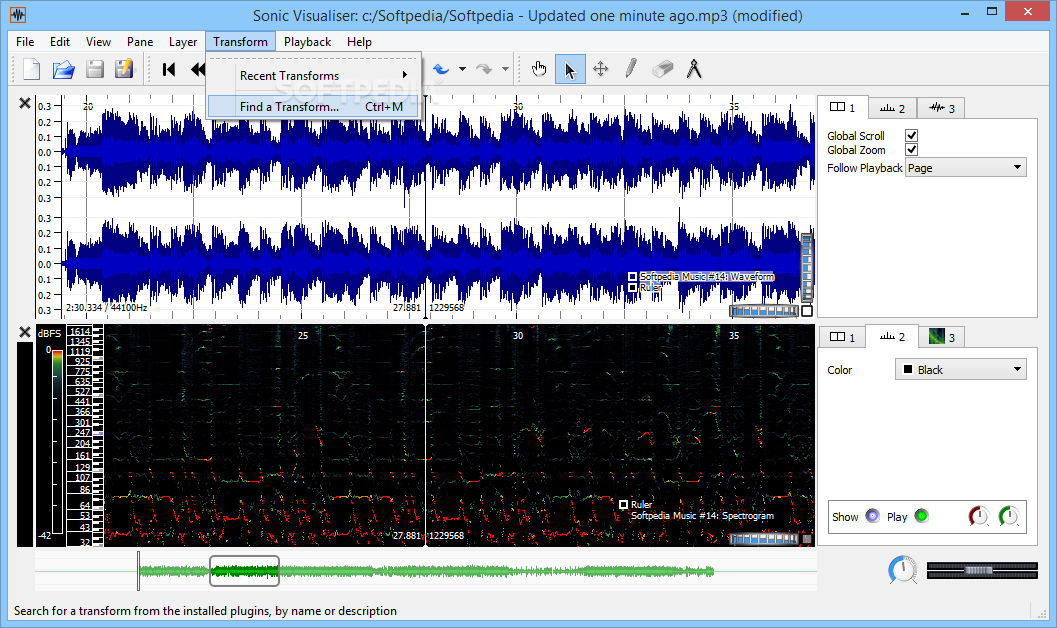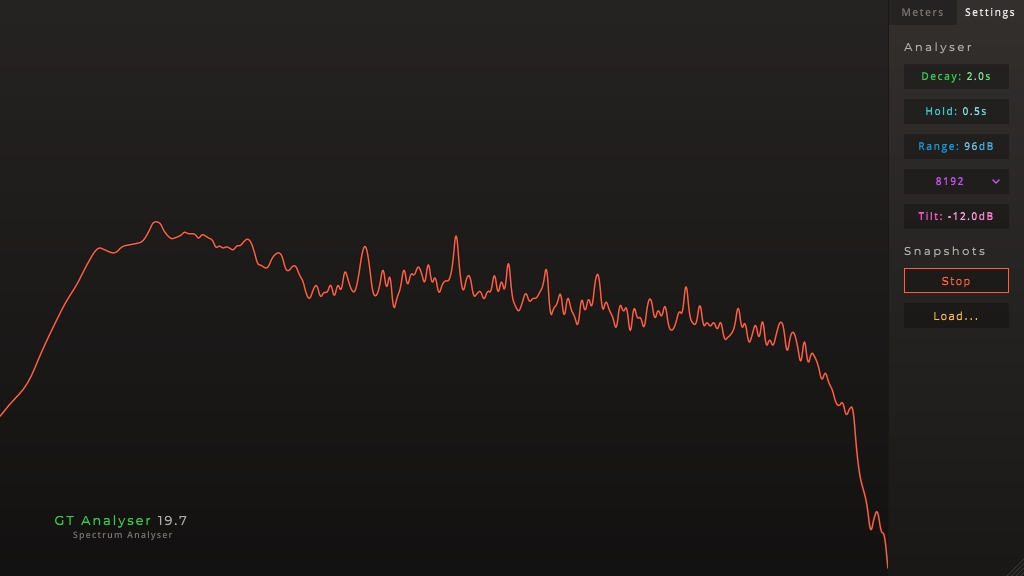

- Aubio plugins not loading in sonic visualiser update#
- Aubio plugins not loading in sonic visualiser plus#
PluginRDFIndexer::reindex: NOTE: no vamp:Plugin resources found in indexed documents NOTE: Document::setModel: Layer 0x3773a00 ("Waveform") is already set to model 0 ("(null)")Ĭomparing current version "1.7.1" with latest version "1.7.1" NOTE: Document::setModel: Layer 0x371c950 ("Ruler") is already set to model 0 ("(null)") RtMidiIn::initialize: error creating ALSA sequencer input client object. This is what I get when launching from a terminal:ĪLSA lib seq.c:910:(snd_seq_open_conf) symbol _snd_seq_hw_open is not defined inside (null) One suggested solution was to recompile I attempted and failed. The speculation there is a conflict with pulseaudio. Google did help me out: topic on vamp forums ( 82&topic=129.msg318#msg318) Sound is working for the system, but in Sonic Visualiser there is no playback. I am booting via a static Grub entry on a Debian-managed partition, but I've updated it and am currently booting 2.6.31-16-generic.
Aubio plugins not loading in sonic visualiser update#
I installed sonic-visualiser_1.7.1cc-1_b, and it worked without issues-inculding playback-though I was still using Intrepid.Īs the story goes, I recently upgraded to Karmic by way of Jaunty just using the Update Manager, which also went without incident. Sonic Visualiser eats that.Many music fans will have heard of Sonic Visualiser (), which is popular enough on 'buntu to have its own build, even a 64-bit.

The work Sonic Visualiser does is intrinsically processor-hungry and (often) memory-hungry, but the aim is to allow you to work with long audio files on machines with modest CPU and memory where reasonable.

Sonic Visualiser is pervasively multithreaded, loves multiprocessor and multicore systems, and can make good use of fast processors with plenty of memory. Even if you have to wait for your results to be calculated, you should be able to do something else with the audio data while you wait. In this respect, Sonic Visualiser aims to resemble a consumer audio application. The user interface should be simpler to learn and to explain than the internal data structures. To facilitate ready comparisons between different kinds of data, for example by making it easy to overlay one set of data on another, or display the same data in more than one way at the same time. To provide the best available core waveform and spectrogram audio visualisations for use with substantial files of music audio data. The design goals for Sonic Visualiser are: Time-stretch playback, slowing right down or speeding up to a tiny fraction or huge multiple of the original speed while retaining a synchronised display.Įxport audio regions and annotation layers to external files. Select areas of interest, optionally snapping to nearby feature locations, and audition individual and comparative selections in seamless loops.
Aubio plugins not loading in sonic visualiser plus#
Play back the audio plus synthesised annotations, taking care to synchronise playback with display. Import note data from MIDI files, view it alongside other frequency scales, and play it with the original audio. Import annotation layers from various text file formats. Run feature-extraction plugins to calculate annotations automatically, using algorithms such as beat trackers, pitch detectors and so on. View the same data at multiple time resolutions simultaneously (for close-up and overview). Overlay annotations on top of one another with aligned scales, and overlay annotations on top of waveform or spectrogram views. Look at audio visualisations such as spectrogram views, with interactive adjustment of display parameters.Īnnotate audio data by adding labelled time points and defining segments, point values and curves. Load audio files in WAV, Ogg and MP3 formats, and view their waveforms. Sonic Visualiser contains features for the following:


 0 kommentar(er)
0 kommentar(er)
